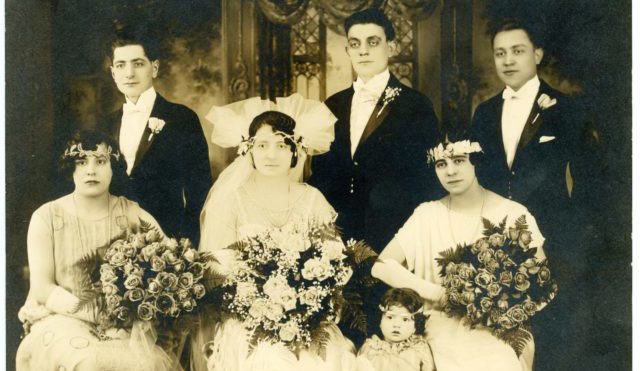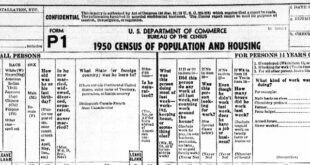
I have spent a lot of time during the past few months trying to track down Cook County marriage records on Familysearch. I should have spent that time coming up with better ideas for Christmas presents! I was surprised how many couples in my file were born in Chicago and had their children in Chicago, with no marriage records to show for it. It didn’t make sense.
Since Familysearch released the 1921-1941 Cook County marriages, I figured I would find everyone in that time period and that would be that. However, I was missing quite a few couples and I needed to figure out why. A few of my experienced colleagues pointed me in the right direction.
First of all, before the era of quickie weddings in Las Vegas by Elvis impersonators (indeed, before Elvis!) people traveled to Crown Point. Indiana, for a quick wedding. Crown Point is in Lake County Indiana and they had the loosest laws regarding marriages. Come to the courthouse, get your marriage license, go see the judge, and get married! It was that simple. They did not require a waiting period or a blood test prior to the marriage, and if the couple’s impending nuptials were disapproved of by any of their parents, it was an easy way to elope.
In the late 1930s, Indiana was so overwhelmed by the number of couples getting married that they dug up an old statute that required a residency period in Lake County prior to marriage there. Once they started enforcing the law, the couples stopped going there.
The good news is that Familysearch has marriage records for Lake County Indiana from 1837-1958. There is very little detail on them, but if you cannot find your Chicago couple getting married in Cook County, you should search for them in the Lake County “Marriage Mill.”
Having hunted for many couples in Indiana (and finding quite a few) I had to still wonder about the ones I didn’t find in either Cook County, Illinois, or Lake County, Indiana. I searched nationwide and came up empty. So there were only two possibilities: either these couples never married at all, or I had to find a better way to search for them. There were far too many couples for it to be a simple case of not marrying. It must be a problem with the spelling of the names.
In many previous columns, I have discussed how familysearch will find close matches using a search method that first finds exact, then close matches, then a little less close, etc. It also finds English equivalents of Italian first names. For example, it can find Joseph when you search for Giuseppe etc. Then one of my colleagues asked me if I used asterisks in my search. “Why would I do that? Familysearch already finds close matches even if the name is misspelled.” Well, I may be stubborn, but I supposed it doesn’t cost anything to try using asterisks.
For those of you who don’t use asterisks in your searching, I am referring to the method of substituting an asterisk (*) in place of missing letters. Let’s say that I am looking for the marriage of someone named “Basile” and they could not read the handwriting and transcribed it as “Bosile.” Familysearch won’t find that one naturally even though “a” and “o” look very similar. However, if I search for “B*sile,” it will find Basile, Bosile, and even BGsile and BZsile if there were such a name. The asterisk substitutes for any character regardless of how wrong it can be.
You can use more than one asterisk in a search as well. What if they transcribed Basile as “Boselo.” Close but no cigar. So I can search for “B*s*l*” and it would find “Boselo.”
Keep in mind that an asterisk can replace any number of characters at one time. So if I search for “N*t,” it could come back with “Not,” “Neat,” “Nuimiot” or even “Neandertahlt” because all four words start with an N, end with a T and have letters in between.
If I only wanted to find words with a single letter between the N and the T, I can use the question mark instead of the asterisk. So a search for “N?t” would only return “Nat,” “Net,” “Nit,” “Not” and “Nut” and “Ngt” if someone transcribes a word that way.
So I tried a new method and it worked quite well. If I were searching for the marriage of “Giuseppe Santoro” and “Maria Ferrara,” I would search for:
First name: G*
Last Name: S*
Then click “spouse” and fill in:
First Name (spouse): M*
Last name (spouse): F*
I would limit the search to a reasonable range of years so I don’t get everybody. If their first child was born in 1931, I would search 1915-1931. Depending on when they were born, I could tighten the range a little more.
So I would click “marriage” and put:
Place: Illinois
From: 1915to: 1931
Now I would click “Search”
By using the first initial and the asterisk, I would get any first name starting with “G” and it wouldn’t matter how many letters came after it because of the asterisk.
So my search could come back with:
Guisepi Sontara and Mary Farerr
This is badly misspelled compared to the couple I’m looking for, but they’re pretty close and should be reviewed. You will also find “George Strait” and “Minnie Fandango.”
Keep in mind that you probably wouldn’t find “Joseph Santoro and Mary Ferrara” because familysearch is no longer going to search using the special method if you use the asterisks. The asterisk search method overrides the other method.
I have also noticed quite a few marriages where they go by less formal names, like Joe or Kate. So you can search for G* and it will find every possible messed-up spelling of Giuseppe. But if you need to check for Joseph or Joe, you will have to search for J*. For every Italian first name that has multiple English variants, you may have to search for both. If you’re looking for Giovanni, you may have to search for J* (John). Pasquale would be P* or C* (Charles). Vincent is V* or J* (James).
All I can say is that I had a lot of luck using this method. I used the same method while searching for parents on birth certificates. I would not search for a name, but I would limit the birth year to either a single year or a few years, and search for the parents using the one-letter-and-asterisk method.
Father First name: G*
Father last name: S*
Mother first name: M*
Mother last name: F*
I also used what I call the vowel replacement method.
Father first name: G*
Father last name: S*n*r*
Mother first name: M*
Mother last name: F*r*
If you get too many search results, add more consonants and asterisks:
Father first name: g*s*p*
Etc.
If you get too few results, take out a consonant and asterisk.
G??d l*k!
If you have any questions, send me an e-mail at italianroots@comcast.net and please put “Fra Noi” in the subject line. Have fun!
 Fra Noi Embrace Your Inner Italian
Fra Noi Embrace Your Inner Italian






Been trying to find a marriage record for my GGP for a while. I recently required citizenship to Italy and this was the only document I couldn’t find. While it didn’t hinder my citizenship, it would have been nice to get every piece of the puzzle.
Cook County, Lake County, Wisconsin all dead ends. Thanks for your articles. Always nice to read.